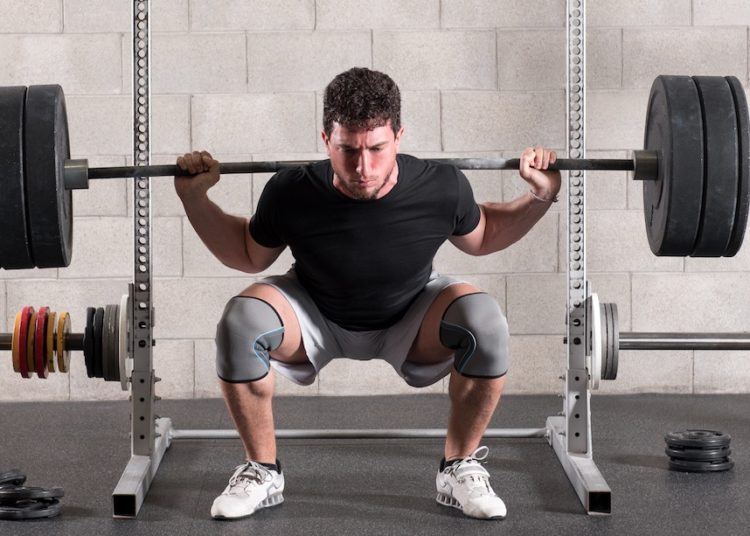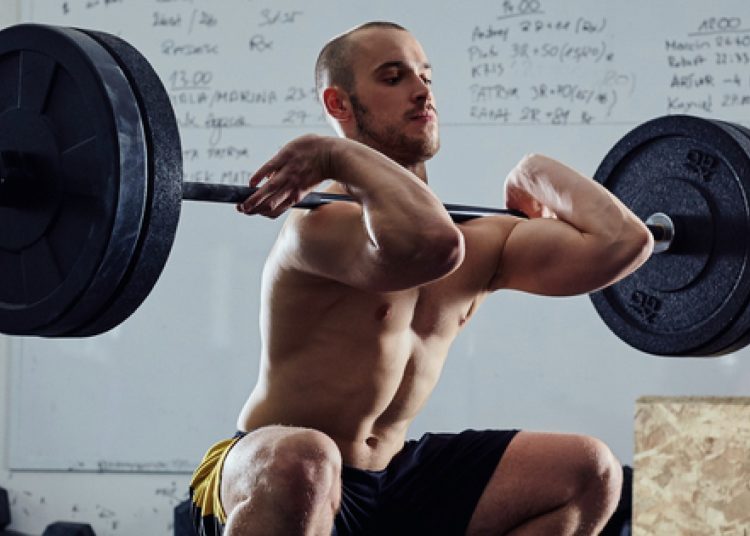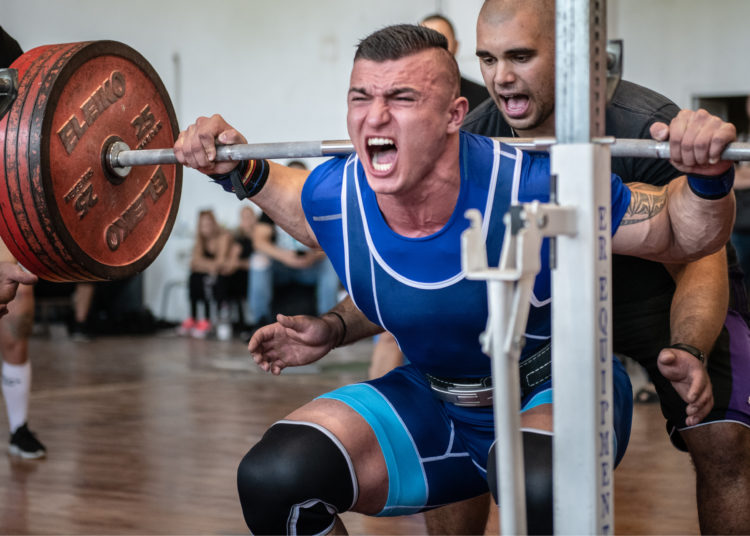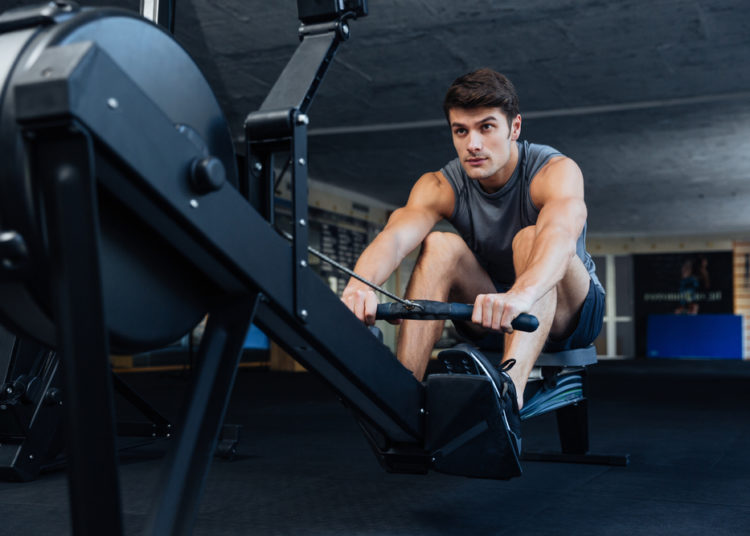So you eat, sleep, and breathe the big three lifts, but you’re interested in trying out CrossFit. Or you already dabble and want to get better. Or you’re already pretty damn good and are chasing even greater CrossFit® glory.
Wherever you fall on the spectrum, you might already be predisposed to being good at functional fitness. And if you’re not, but want to be, don’t worry. You can still get there. The following article won’t make you a master at CrossFit — it’s a very complicated sport, after all — but if you’re a powerlifter looking to explore CrossFit, we’ve lined up a few ways for you to prepare for your WODs and bridge the gap between the two sports.
Editor’s note: This article is an op-ed. The views expressed herein are the author’s and don’t necessarily reflect the views of BarBend. Claims, assertions and opinions have been sourced exclusively by the author.

The New CrossFit Study
According to a recent study put out by the Switzerland-based journal Sports, different physiological markers will help give your body a natural boost in different CrossFit workouts. In the benchmark workout Fran, for example, back squat strength was the greatest indicator of performance success.
The tl;dr version of the study is this: people who already have strong lower bodies, high peak anaerobic power, and high aerobic power, may have a competitive edge when learning CrossFit.
[Want more CrossFit research? See how CrossFit Endurance compared with traditional endurance training.]
What This Means
You’re a powerlifter, so chances are you’ve already got bomb lower body strength and pretty decent anaerobic peak power. So that’s where we’ll start. Really honing it in with those areas, and then — sorry — we’re going to improve your aerobic power.
Spoiler: that means cardio.
But it’ll ultimately boost your lifting: I promise.

Lower Body Strength
If you’re primarily used to squatting heavy, that’s excellent: you’re already well on your way. But, to maximize your lower body strength and to prepare your body to increase your anaerobic capacity, you’ll want to make sure you’re paying extra attention to your glutes and quads.
Assuming you’re already working your back squat in a heavy range, you’ll want to incorporate front squats and barbell hip thrusts into your routine (if they’re not already there). Here are a couple of suggestions for an 8-week block.
- Front Squat: 4 sets of 8 reps, twice a week for four weeks. Transition to heavier weight at 5×5 during weeks 5-8.
- Barbell Hip Thrust: 4 sets of 8 reps, once a week for four weeks (once because we’re assuming you’re also deadlifting heavy). Transition to heavier weight at 5×5 during weeks 5-8.
[Related: Don’t miss our complete guide to mastering the hip thrust.]

Anaerobic Power
This is where lifters get to have fun with speed work. It’s painful, but it’s also a twisted kind of fun: and it’ll build your anaerobic power beautifully.
Assuming you train squats more than once a week, choose one of those days to be your speed squat day. Choose another to be your pause squat day. If you squat three times a week, choose another day to be your regular, thank-God-I’m-not-doing-speed-work-today day.
Speed Squat
After your regular heavy squats, you’ll strip the bar (painful for your ego, I know, but I promise the workout will be more painful for your body) — then you’ll get to your speed work.
With as little as 55% of your 1-rep max on the bar, you’re going to squat as fast as you possibly can for five reps. Imagine completing a single rep in a single second — we’re talking that fast. Work your way up to being able to bang out 10 of these little monsters, and try for three sets (with plenty of rest in between).
Pause Squat
Again, strip the bar after your regular squat session. Again, we’re talking about starting with as little as 55% of your 1RM on the bar (especially if you’ve never done speed work). For pause squats, you’re going to descend at your regular speed (or even a little faster) — and, when you reach the hole, you’re going to… stop. And you’re going to wait.
Start at a three-second pause — three full seconds, set up your phone timer in front of you to keep yourself accountable — for five reps. Over the course of a month, work your way up to seven full seconds for each rep. Once that feels easy — well, not easy, but less combustible — go up in weight and start at three seconds again.
The amount of power you’ll have to generate to get out of the hole after a long, dead stop is going to be (painfully) intense. It’ll build your anaerobic power to unprecedented levels.
[Related: Dive deeper in our guide to pause squats.]

Aerobic Power
And finally, we tiptoe out of the lifter’s comfort zone to start building aerobic power. To start, you’ll want to build your aerobic capacity — that transition from I’m dying when you first start cardio to oh, this isn’t too terrible after the first few minutes. Start slow and start low impact: think cycling (not before leg day), the elliptical, and even the rower. Be sure to be working under your 65% max heart rate: you’re not building power at first, just capacity.
Add five minutes of cardio cooldown to each workout for a few days. Increase the volume — but not the intensity — to ten minutes over the next couple of weeks. Once you’re at a comfortable and easy 30 minutes, you’re ready to start building your aerobic power.
This means that you’re going to increase your intensity (slowly) — row harder, cycle faster. Get close to your VO2max, and try to stay there. Only for a couple of minutes at first, then for longer. When you can hit 12-15 minutes lingering around your VO2max, your aerobic power will be so much better than it was before.
[Looking for a good rower? Check our review of the Xebex Air Rower!]
Looking Ahead
Even if you’re never going to step into a CrossFit gym, training like you’re going to kick some CrossFit ass is going to make you a better overall athlete. And, if you stick with it consistently enough, it’ll build your work capacity in a way that’ll bust your lifting numbers through the proverbial roof.
Of course, there are a ton of skills involved in becoming a great CrossFit athlete. There are skill heavy gymnastic movements, kettlebell exercises, and Olympic lifts that you need to be proficient at. Nonetheless, if you build a base of functional fitness by improving your lower body, anaerobic power, and aerobic power with these tips, you’ll be in a great place to get started.
Editor’s note: The content on BarBend is meant to be informative in nature, but it shouldn’t take the place of advice and/or supervision from a medical professional. The opinions and articles on this site are not intended for use as diagnosis, prevention, and/or treatment of health problems. Speak with your physician if you have any concerns or before beginning any new workout regimen.
Featured image via Oleksandr Zamuruiev/Shutterstock